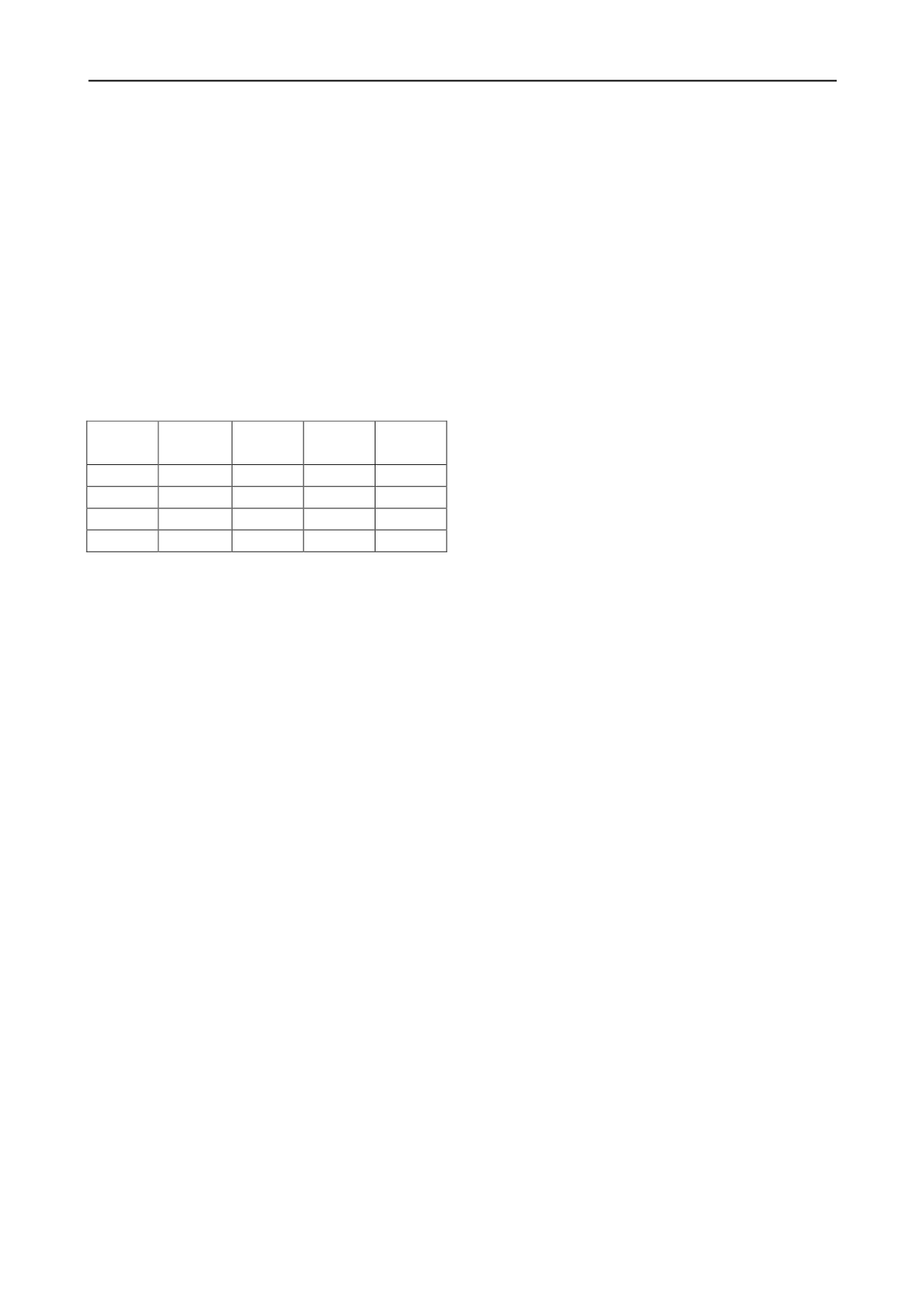
3097
Technical Committee 301 /
Comité technique 301
Proceedings of the 18
th
International Conference on Soil Mechanics and Geotechnical Engineering, Paris 2013
5MIXING TEST OF SLAKED LIME-SOIL AND RESULTS
Table 1 shows the proportions of material soils to be prepared
and slaked lime to be mixed for them. In Table 1, item “sand”
means excavated sandy soil which was used at the tower’s
erection. Each mixed soil is mixed this “sand”, clayey soil and
lateritic soil with weight ratio in Table 1. Slaked lime, which is
a stabilizing material, is added to the mixed soil 1 at rates of
Table 1. The mixing purpose of clayey soil is expected the
stabilized effect with chemical reaction of clay minerals and
slaked lime. Also, on lateritic soil mixing, it is intended that the
ferromagnetic ion and aluminum ion in it will promote chemical
hardening reactions. Grain size accumulation curves of mixed
soils are shown in Fig.3. Results of the test were evaluated by
comparison of unconfined compression strengths on treated
specimens.
Table 1. Proportion of mixed soil
items
sand
(excavated
sandy soil)
clayey soil lateritic soil
slaked lime
mixture rate
(%)
mixture A 100
0
0
5, 10, 15
mixture B
85
15
0
5, 10, 15
mixture C
70
30
0
5, 10, 15
mixture D
70
15
15
5, 10, 15
1) Unconfined compression strengths of treated specimens
were increased as the mixing rates of slaked lime were
increased.
2) The unconfined compression strengths and the
deformation moduli of tested specimens increased with their
curing times, and proportional relation between them was
recognized. Relation between the curing time and the
unconfined compression strength on mixed soil D is shown in
Figure 5.
3) The changes of their dry densities by curing time were not
recognized.
Figure 5. Relation of unconfined compression strength and curing time
Based on above-mentioned results, the material soil used for
the foundation platform and its base ground was a mixture of
three different soils of the original sandy soil, clayey soil and
lateritic soil at weight ratios of 70%, 15% and 15%( mixing soil
D proportion). Slaked lime, which was a stabilized material,
was added to the mixed soil 1 at a rate of 0.1.
6CONSTRUCTION PROCEDURE AND UTILIZATION OF
GEO-TEXTILE
It is decided that mixed soil D proportion should be used for
material soil and slaked lime should be used for a stabilized
material at adding to the mixed soil 1 at a rate of 0.1. The
construction method will be applied by tamping method.
The construction procedure on jobsite is as follows.
1) The material soil treated by slaked lime should be spread
at 15 cm of its thickness, after then it should be compacted to a
thickness of about 7.5cm. By the repeat of this work, the base
ground should be developed to the designated level.
2) Compacting work is decided by the field trial work to be
composed of 3 steps. Primary compaction should be conducted
using a wooden rod (dia.3cm) with man power’s tamping, and
followed by secondary compaction using a flat steel plate
(15cm×15cm×1cm) as the same manner. Finally, surface
compaction should be conducted by using of a tamping rammer.
3) The designated base ground for the tower will be made of
laminated structure with 7cm thickness tamping layers. Since
there is a smooth surface among each layer, its existence may
make a week point on the mechanical standpoint. In order to
secure the bond of each layer, roughening work for each
compacted surface should be done before tamping of the next
layer. The surface roughening work should be performed by
using of steel rakes with manpower.
When allowable bearing capacity is 1.2MN/m
2
, it is assumed
that the compressive strength in-place should be about 60
percent of the strength obtained in the laboratory test. This
means that the target value should be 2 MN/ m
2
. In the case of
mixed soil D, it would be take a curing time of more than 90
days to achieve a value of 2MN/m
2
. However, since the
reconstitution work for the superstructure will be needed to be
executed without waiting 90days, some measure to reinforce the
improved soil should be needed until the onset of its strength.
As above-mentioned consideration, it is decided that Geo-textile
should be applied for temporally reinforcement of improved
soils until the onset of its strength.
The designing study was preceded on a section of base
ground in Figure 6 which spread and inserted 3 layers of
Geotextile. Table 2 shows the specification of Geotextile which
was utilized. One of the effects of Geo-textile is to work as
reinforced materials of shear resistance for soil mass. When
using this effect for the designing base ground, it is expected
that it increases safety factor to the sliding failure by about 20
percent.
Figure 6. Section of spreading Geo-textile


